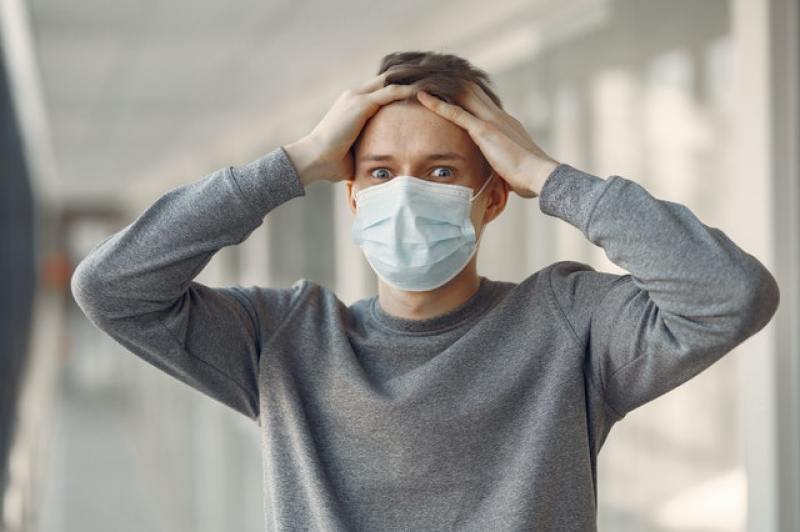
A new study has found that tiny airborne particles that contain RNA from the coronavirus that causes COVID are present both inside and outside of rooms where COVID-positive, self-isolating individuals were under quarantine at home.
This suggests that COVID can be transmitted even outside the room of the COVID-positive person, posing a risk for others inside the home. It also implies that self-isolation, mandated as a means to protect others, doesn't really work.
According to The Epoch Times, the study was published in the Annals of the American Thoracic Society and is the first to report on the specifics of household air contamination with COVID under typical living conditions when one member of the household tests positive for the coronavirus. Airborne transmission is believed to be the factor that causes higher rates of COVID positivity among households with lower incomes.
"Risk of infection from larger respiratory droplets that rapidly settle onto surfaces, typically within two meters of the source, can be reduced by hand-washing, social distancing, and face masks, but the tiny respiratory particles that stay suspended in air for hours, require air filtration, ventilation, or better masks for prevention," the study's lead author Howard Kipen wrote. Kipen is a professor at Rutgers School of Public Health and director of Clinical Research and Occupational Medicine at the Environmental and Occupational Health Sciences Institute.
For the study, researchers led by Kipen took air samples from 11 homes, inside the rooms where a COVID-positive patient was self-isolating, as well as air samples from an adjacent common room to determine the presence of COVID-specific genes in airborne particles.
Researchers found that in at least one of three virus genes in six of the 11 isolation rooms and in six of the nine common rooms, the air samples had in fact COVID-specific genes. Out of the 11 homes, nine reported no other cases of COVID.
Researchers also asked study subjects to record their time in the isolation room and the common room to understand how COVID spreads inside their homes. Kipen explained that "many did not strictly adhere to self-isolation." They found that eight of the 11 infected study participants reported spending a few hours up to 14 hours in the common room, while five of 11 participants reported spending time in other areas of their home. Moreover, four out of the 11 homes also had other residents who were COVID-positive or had symptoms.
"Our indoor air sampling data clearly demonstrated that measurable airborne SARS-CoV2 RNA was present in the air in the homes of most infected people, not only in the isolation room, but, importantly, elsewhere in the home," Kipen explained.
"The findings show that tiny airborne particles containing SARS-CoV-2 RNA can be found in homes of infected individuals beyond the room where they are supposedly self-isolating," Kipen concluded.
In January, the Centers for Disease Control and Prevention (CDC) shortened recommended isolation and quarantine for COVID patients to just five days. But new research from the University of Chicago found that 46% of COVID patients still tested positive after the fifth day of isolation, while 41% of COVID patients still tested positive after being isolated between five and 10 days, Insider reported.
The study was conducted on 260 fully vaccinated health care workers, 141 of which received a booster shot. Research found that 46% of 52 fully vaccinated healthcare workers who took a COVID test on Day 5 tested positive. These individuals had two or three doses of the COVID vaccine. Meanwhile, Day 6 showed that 58% of 53 fully vaccinated healthcare workers tested positive, while 38% of 68 showed the same result on Day 8. On Day 9, 25% of 28 fully vaccinated healthcare workers tested positive, while 54% of 13 fully vaxxed tested positive on Day 10.
This led researchers to conclude that those who sought to leave isolation on Day 5 were "likely still contagious." Up to 58% tested positive six days into their isolation.























